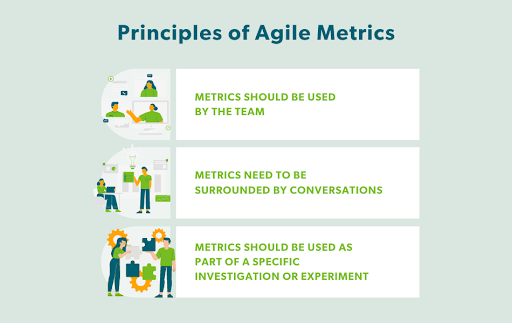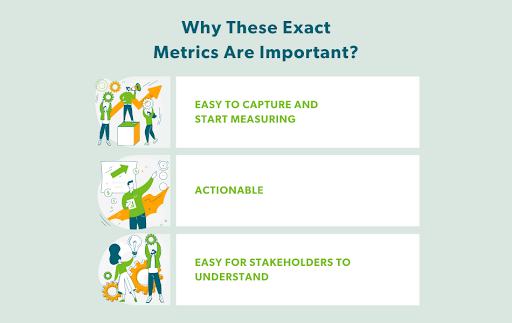-
- marketing agility
- Teams
- Organizations
- Education
- enterprise
- Articles
- Individuals
- Transformation
- Solution
- Leadership
- Getting Started
- business agility
- agile management
- going agile
- Frameworks
- agile mindset
- Agile Marketing Tools
- agile marketing journey
- organizational alignment
- Agile Marketers
- People
- Selection
- (Featured Posts)
- strategy
- agile journey
- Metrics and Data
- Kanban
- Resources
- Why Agile Marketing
- agile project management
- self-managing team
- Meetings
- Scrum
- agile adoption
- scaled agile marketing
- tactics
- scaled agile
- AI
- Agile Meetings
- agile marketing training
- agile takeaways
- Agile Leadership
- agile coach
- enterprise marketing agility
- Scrumban
- state of agile marketing
- team empowerment
- Intermediate
- agile marketing mindset
- agile marketing planning
- agile plan
- Individual
- Team
- Videos
- agile marketing
- kanban board
- Agile Marketing Terms
- agile transformation
- traditional marketing
- FAQ
- agile teams
- Agile Marketing Glossary
- CoE
- Scrumban
- agile
- agile marketer
- agile marketing case study
- agile marketing coaching
- agile marketing leaders
- agile marketing methodologies
- agile marketing metrics
- agile pilot
- agile sales
- agile team
- agile work breakdown
- cycle time
- employee satisfaction
- marketing value stream
- marketing-analytics
- remote teams
- sprints
- throughput
- work breakdown structure
- News
- agile brand
- agile marketing books
- agile marketing pilot
- agile marketing transformation
- agile review process
- agile team charter
- cost of delay
- hybrid framework
- pdca
- remote working
- scrum master
- stable agile teams
- stand ups
- startups
- team charter
- team morale
- user story
- value stream mapping
- visual workflow

Being able to produce measurable results from your activities is critical for the success of your team and organization, as well as a tool for showcasing the value you create in front of stakeholders and partners.
The power of collecting data about how you work and the results you produce extends to an Agile transformation as well.
No matter where are on your journey toward business agility, it’s vital to measure your progress. Your organization produces loads of valuable data and you can’t let it go to waste. During your business agility transformation, tracking KPIs in addition to Agile process metrics can provide you with plenty of information about your processes and how to improve them further.
By keeping a close eye on a few key metrics, you can increase business value, discover what setbacks you’re dealing with, and what your next move should be. Time to measure!
Why Measure Agility?
Metrics are vital for understanding how Agile your organization is and what can be improved for even greater agility. With frequent tracking, you gain a better perspective of how value flows through your systems, enabling you to identify flaws, and focus on delivering even more value.
Demonstrate ROI
Metrics can help you prove the success of your business agility program by demonstrating ROI to stakeholders and executives. It’s a must-have metric to follow closely and use to support the direction your organization is heading.
Establish baseline measurement
Baseline measurement, also known as baselining, is establishing a starting point for any process or metric from which improvement or impact can be determined. As a result, you can grasp how efficient your business initiatives really are, comparing your results before the process change and after.
Build the business case and get buy-in from stakeholders
Building credibility with stakeholders is essential for organizational success. Whether a new initiative is being developed from scratch or being built on top of an existing foundation, it’s especially important to establish its value in the early phases. By tracking metrics such as effectiveness, cycle time, and throughput, you can create a compelling business case for the benefit of your projects.
Principles of Agile Metrics
What makes Agile process metrics more valuable than traditional ones is that they are focused on outcomes instead of simply measuring outputs. Being familiar with the key concepts that underpin Agile process metrics will help you get the most out of the stats you're collecting and develop a deeper understanding of the context around them.

Principle #1: Metrics should be used by the team
Often, managers who create metrics reports are detached from the team, so they don’t have enough context to understand the numbers they're generating. As a result, they just read them without allowing any further discussion. This isn’t likely to contribute to improving productivity and processes because it's a one-sided conversation.
Metrics are a great opportunity for conversation. That’s why it's important for the team to collect the metrics that are closely tied to their initiatives and let them be the ones who analyze them and generate insights.
Principle #2: Metrics need to be surrounded by conversations
Metrics are more than just numbers. They’re conversation starters. The numbers should spark a conversation about how and why you collected them, what context they carry, and what you plan to do with them. There are millions of data points we could measure about our teams, from an impact and process perspective. Knowing which ones matter to your improvement initiatives is an ongoing conversation as your team evolved.
Principle #3: Metrics should be used as part of a specific investigation or experiment
Measuring just because you “have to” is pointless. Every indicator that you follow should be part of the bigger picture. Make sure KPIs play an important role in your process so you can identify in which areas you're having problems and how you can improve that. Consider how often a metric should be updated and when it makes sense to action on a particular piece of data we have collected.
Use These Metrics to Measure Business Agility
The only metrics that need your attention are the ones that give you information to make decisions and improve. We’ve listed a few essential indicators of process health that can help you determine the levels of success of business agility within your organization.
Speed of the process: Cycle Time
Cycle time offers a customer-focused perspective on how long it takes your organization to deliver outputs. It’s calculated based on the amount of time from the beginning and end of a piece of work.
Through tracking cycle time, you can get a sense of how quickly the team completes a certain task by looking at the cycle time for similar types of activities.
If cycle times rapidly increase, you have a bottleneck or other internal problems that require attention. To decrease your cycle time, you might want to consider limiting work in progress.

Velocity
The volume of work that a Scrum team usually completes in a sprint is called velocity. It’s typically expressed in story points. This Agile metric is essential for determining the amount of value a team can produce in a sprint and can be used to estimate capacity during planning moments.
Efficiency of the process
Efficiency is the most crucial factor in determining how much an Agile organization can optimize its existing resources without adding extra budget or people to its teams. The efficiency of a workflow is defined by the ratio between the time our work items spend waiting in queues and the time they are being actively worked on. Process efficiency can be determined by looking at the average efficiency of a particular type of task.


After you measure and see where you fall short, you can work on increasing your efficiency. This can happen by ensuring better communication with other departments and limiting the number of handoffs, reviews, and days spent waiting on a dependency.
Productive Agile teams tend to aim for an average process efficiency of 50%, so that they don't spend more time waiting on dependencies than actively producing value.
Rate of completion via throughput
Throughput measures the total number of tasks that are completed in a given period of time. It is a useful indicator of team productivity since it takes into account the activities that were broken into bite-size action items.
Unexpected and rapid highs and lows in throughput indicate there are workflow issues and vice-versa, stable throughout is a sign of a steady and stable workflow.
Internal Stakeholder & Employee Happiness
Clear-cut quantitative data is great, but it means nothing if it's not sustainable in the long-run. Who needs a high team efficiency score, when your team is miserable and won't be able to keep it up for very long?
For organizations to work like a well-oiled machine, you need to make sure everyone is also satisfied with the current process. Happiness is a metric, too! After all, unsatisfied people aren’t motivated to work and give their best effort.
Conduct frequent surveys among employees and internal stakeholders to make qualitative feedback actionable. As a result, you’ll receive valuable feedback regarding satisfaction, morale, performance, and engagement. Based on what you know, you can make your processes and work environment an even better place to be in.
Outcomes over outputs
As a general rule of thumb, when Agile teams measure anything, they are focusing on the outcomes such as ROI and customer satisfaction ratings instead of looking only at whether the outputs in their checklist were completed. When tracking metrics like throughput and efficiency, make sure to link them directly to the outcomes they product. As a result, you’ll be able to see the bigger picture and determine how your internal process metrics are affecting the impact you're able to create outside of the team.
Develop Your Own Measurement Process
To keep track of how your agility evolved, you don't always need a templated evaluation process. Depending on your industry and customer base, define what works for you through conversations with your team and assign an owner to keep track at regular intervals.
Why These Exact Metrics Are Important?
The metrics mentioned above cover almost every aspect of your workflow, from process to impact. When it comes to collecting them, digital tools have made it easy to keep track in a way that saves time while providing priceless information that your team can action on.

Easy to capture and start measuring
These metrics can be tracked easily by using an Agile tool. Regular tracking is a great way to have a reality check on your process that doesn't have to be hard especially when you have the support of a tool. However, most of these metrics can also be tracked manually, if you're using a physical workflow.
Actionable
These metrics will reveal where your process can bear further optimization and allow you to come up with real action items that can get you back on track or improve your process.
Easy for stakeholders to understand
Although Agile metrics aren't exactly what stakeholder might be used to, they’re clear and easy enough to be understood by anybody including your non-Agile stakeholders.
Let’s Measure
Don’t let your data go to waste. Agile metrics provide an enormous amount of information and an advantage for improving your business agility processes.
The success of your organization depends solely on your commitment to track and constantly improve. Each metric we covered has the power to help you plan based on insights and produce more value. Use the information to harness the power of your data and get one step closer to ultimate business agility.
Before you move on, why don't you take a second to get our Agile Business Quick Start Guide?
Topics discussed
Improve your Marketing Ops every week
Subscribe to our blog to get insights sent directly to your inbox.


